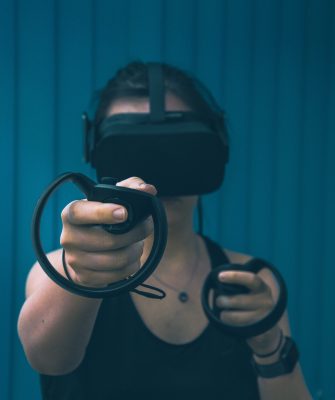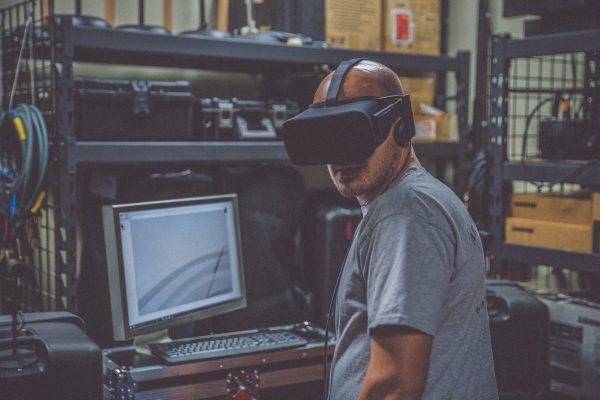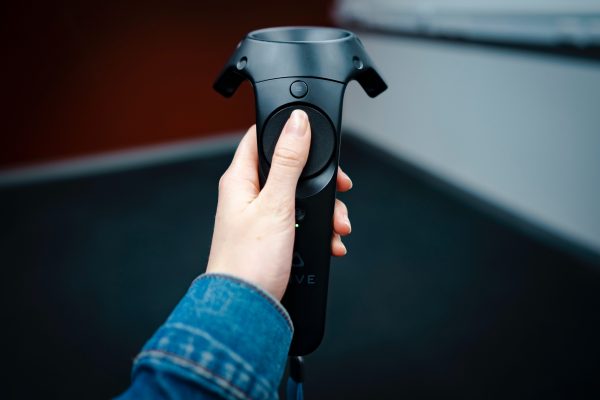Understanding Virtual Technology(VR) and its future
Virtual Reality or VR is the technology that use a combination of modern technologies such as powerful computer processors, high resolution displays, miniaturized components, advanced sensor packages to completely immerse the user in a synthesized interactive 3D environment.

About the VR Technology
A basic VR setup commonly consists of three main components. First, we have the VR head mounted display. Within the headset are two high resolution screens for each eye: with pixel counts ranging anywhere from full HD to 4K resolutions. These screens however are not presented directly in front of the eyes, there is a set of lenses in front of the screen to help focus the image and create an immersive experience for its user. In most headsets, there is also an integrated sound system further immersing the user.
The second part is the processing unit. The processing unit is a computing device powerful enough to run the VR graphics; being able to render separate images for the two screens at the same time. In the VR industry, there are many contenders for the processing unit. Ranging from PCs with mid to high-end Graphics Processing Units (GPUs), PS4s, Xbox One, even standalone devices that use mobile chips to render the graphics themselves. The requirement is simple, if there is enough computing power to render the 3d image that is being fed to the screen, the processing unit can be used. Recent advancements in mobile processing technologies has paved the way for the development of a new generation of VR headsets. Oculus, a company owned by Facebook, released a standalone device just last year named the Oculus Quest. This device takes advantage of the powerful Snapdragon 855 mobile chipset, usually reserved for flagship android phones, to facilitate VR experiences.
The Third and final components are a set of sensors, typically cameras. These are used to map the room around you, creating an interactive area where users’ movements can be tracked as input for the VR experience. Combined with advanced tracking algorithms, the camera may sense the way you move and translate it into data; Allowing for the processing unit to render an accurate representation of your movement within the VR environment. A set of sensors is typically comprised of 4 cameras. In a conventional VR setup, the cameras are stationary. Newer headsets have incorporated multiple cameras within the headset itself, allowing for a much more portable and wire-free system.

Using VR, many different processed can be enhanced, especially within the entertainment industry. Enabling an immersive experience for games, movies and many other forms of entertainment. Utilizing this new platform well enough can lead to a whole new era in telecommunications. New ways for developers to interact with customers are being created, new types of media built specifically for this platform, with VR chat and Facebook Venues becoming increasingly popular. Some even believe that the VR industry could experience the same growth that has been seen in the smartphone industry. At first it will start out serving a niche, and later explode to become one of the biggest industries that drive humans into a new age of technology.
While some industrial needs can also make use of the process, the primary intended audience for the system was the VR enthusiast, and hardcore gamer that are looking for new experiences. Since the first available consumer headset appeared on the market, VR has made quite a process as a product. Companies are releasing multiple headsets that are becoming more consumer friendly at a more affordable price.
VR technology in different fields
Gaming is one of the major markets for the VR industry, Virtual reality brings gaming experience to a whole new level. A player can now interact with environment surrounding them on a level never seen before, haptic feedback in controller and gaming vest that vibrates with sounds is a combination that can blur the line between reality and a virtual world. In addition to gaming, virtual reality can give users real life experience of movies, shows, concerts all from the comfort of your home.
Entertainment is only one of the way virtual reality can be useful. Education can be among the major uses of virtual reality. Many studies that require physical presence at location which can be simulated by virtual reality. Thus, millions of people from around the world can learn things now which were only possible by being physically present at the location before VR development in fields such as battlefield simulation, medical training, vehicle simulation and virtual boot camps. VR can also be used for training purposes. Ranging from as simple as safety training to as complicated as military simulation. With virtual reality, tasks and challenges can be created faster and with more convenient. Instead of setting up real life scenarios with actors and real-life location, VR can create all of these with a much lower cost. Real life scenarios and situation can be simulated to fit any specific needs. This makes the training process more convenient, but not easy, with the level of difficulty being modifiable, one set of tools can fit many different level of training purpose.

In area of heritage and cultural development, virtual reality can simulate scenes from past and even historical events, allowing the users to experience the event as if they were there. Not only that, but current significant events such as music festival or international fashion shows or sport games can also be streamed live in virtual reality. Allowing for more users from all over the world to enjoy the real-life experience of the event. Virtual meetings where employees can interact with other people present around them can also be achieved.
Cover Picture: Photo by Hammer & Tusk on Unsplash

This story is authored by George Tran, Content Writer, Onside Media, TO, Canada. If you have stories to share kindly email: – georgetran.onside@gmail.com





